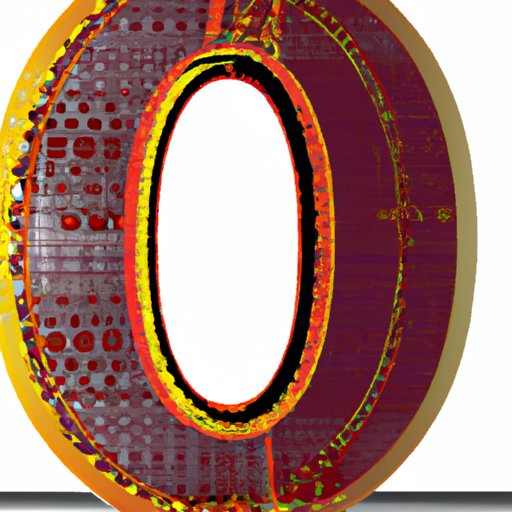Introduction
The invention of the number zero is one of the most important discoveries in history, as it changed the way we think about math and opened up an entirely new realm of possibilities. The number zero has been around since ancient times, but it wasn’t until the fifth century that ancient Indian mathematicians first used it in their calculations. This article will explore the history of the invention of the number zero, how it was developed, and the impact it has had on modern mathematics.

A Historical Account of the Invention of Zero
The invention of the number zero can be traced back to ancient Indian mathematicians who were among the first to use it in their calculations. Ancient Indian mathematicians were some of the most advanced of their era, and they made significant contributions to mathematics and science. They developed sophisticated mathematical systems and techniques that are still used today, such as the decimal system and the concept of negative numbers.
The origins of the number zero are not known for certain, but it is believed that it was first used by ancient Indian mathematicians in the fifth century. The number zero was seen as a symbol of nothingness or emptiness, and it was used to represent the absence of any value. This concept was revolutionary at the time, as it allowed mathematicians to express quantities that had no numerical value.

Exploring Ancient Indian Contributions to Math
Ancient Indian mathematicians developed a sophisticated system of mathematics, which included the invention of the number zero. This system was based on the decimal system and used nine symbols to represent all numbers, from zero to nine. The symbol for the number zero was a circle, which was seen as a symbol of nothingness or emptiness. This symbol was then used to represent the absence of any value in a mathematical equation.
The number zero also had a deeper meaning for ancient Indian mathematicians. It symbolized the concepts of potential and possibility, as it was seen as a starting point for something new. It was also seen as a symbol of infinity, as it represented the idea that there was no limit to what could be achieved with mathematics.
The Impact of the Number Zero on Modern Mathematics
The invention of the number zero had a profound impact on modern mathematics. It allowed mathematicians to express quantities that had no numerical value, which opened up new possibilities for solving complex equations. The number zero also enabled mathematicians to work with negative numbers, which further expanded the range of mathematical operations that could be performed.
The number zero has also been used to create new branches of mathematics, such as calculus, which relies heavily on the concept of the number zero. The number zero has also been used to develop theories and models in physics, chemistry, and other sciences. Without the number zero, much of the progress made in these fields would not have been possible.
Conclusion
The invention of the number zero is one of the most important discoveries in history, as it changed the way we think about math and opened up an entirely new realm of possibilities. The number zero was first used by ancient Indian mathematicians in the fifth century, and it has had a lasting impact on modern mathematics. The number zero has enabled mathematicians to express quantities that had no numerical value, and it has been used to create new branches of mathematics and theories in physics, chemistry, and other sciences.
The number zero is a symbol of nothingness and infinity, and it has come to represent the potential and possibility of mathematics. It has allowed us to explore new realms of knowledge and make remarkable advances in science and technology. The number zero is truly a remarkable invention, and its impact on modern mathematics is undeniable.
(Note: Is this article not meeting your expectations? Do you have knowledge or insights to share? Unlock new opportunities and expand your reach by joining our authors team. Click Registration to join us and share your expertise with our readers.)
